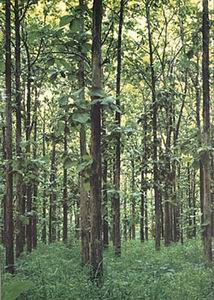Trekking Maps Available
 It was about twenty years ago [in the Soeharto era] when some friends and I decided to embark on an expedition of sorts into the wilds of Central Java and right off the beaten track, so to speak. At that time there were no topographical maps available for sale anywhere.
It was about twenty years ago [in the Soeharto era] when some friends and I decided to embark on an expedition of sorts into the wilds of Central Java and right off the beaten track, so to speak. At that time there were no topographical maps available for sale anywhere.
I sparked up with the idea of the recon maps used by the military and proceeded to ‘make enquiries’ around Yogyakarta. Needless to say this brought unwanted attention from certain sections of the government and we soon found ourselves being visited at our losmen by several military personnel wanting to know ‘why’. We were grilled, passports and visas checked and eventually told there were no maps available to the public. But, we were followed around town, indiscreetly and obvious of course!
Since that time things have changed, both politically and in the publishing world. I was pleased to read that the Puncak Trek Series of guide books will soon be available for those wishing to embark on a bit of adventure. Here’s the article from the Jakarta Post:
Mt Gede, Pangrango guides now available
Four trekking maps and four guidebooks covering the foothills of Mt. Gede and Mt. Pangrango were due to be launched March 10 at the Indonesian Institute of Sciences (LIPI) on Jl. Gatot Subroto, at 10 a.m.
These materials from the Puncak Trek Series are designed to support self-guided treks on footpaths used by local farmers. The materials are the first of their kind in Indonesia and were prepared by non-governmental organization Wahana Informasi Pariwisata Alam (WIPA), based in Bogor.
The maps and guidebooks cover areas above Ciawi and Cisarua markets in Bogor regency, and above Cipanas and Cugenang markets in Cianjur regency.
In addition to detailed topographical features, the four maps contain a wealth of information on the location of about 50 waterfalls and other objects of cultural or historical interest, including schools, warung, warung bakso, scenic views, places for viewing wildlife and sites of former kampongs.
The maps are designed for practical use in the field and are printed on waterproof paper with superior color. They distinguish 13 kinds of land use, including forest, kampong, tea plantations and sawah.
The maps are designed to be used with simple navigational tools, like a compass and altimeter, or with a GPS (Global Positioning System) receiver.
Each map covers about 50 square kilometers (roughly equivalent to seven kilometers by seven km), at a scale of 6 centimeters to the kilometer.
Four scenic circular routes are identified on each map, with a narrative text provided in the guidebooks. These routes are suitable for hikes of half a day to a full day.
The pocket-sized guidebooks, each about 120 pages, are published in two languages — English and Indonesian. The books describe the history and geography of kampongs, plantations and other locations on the map. The materials are documented on the website www.puncaktrek.com.
By providing these maps, WIPA hopes adventurous Jakarta residents will now have the tools to help them explore the areas on foot. In this way, the visitors can enjoy the natural beauty at their doorstep and gain an enhanced appreciation of the local culture and its relation to the natural environment.
In turn, this can lead to better understanding of the need to manage and conserve this important area.
By spending on food and services in the area, visitors will also have an important role in helping the livelihood of the people living there, WIPA believes.
The materials are thereby expected to lead to a new kind of ecotourism based on the initiatives of small groups of tourists and small businesses. The maps are also expected to reduce the operating costs of bringing groups of visitors to the area.
WIPA, formed in 2003, is composed largely of graduates and students of the Geography Department at the University of Indonesia, and includes as well students at the Department of Geodesy at Pakuan University in Bogor and Gunadarma University in Depok. Members of WIPA have worked on these materials since 1998.
(Publication of the materials was made possible by assistance from the Environmental Support Program of the United States Agency for International Development, the New Zealand Agency for International Development, the World Bank, and the Indonesian International Education Foundation, funded by the Ford Foundation.)